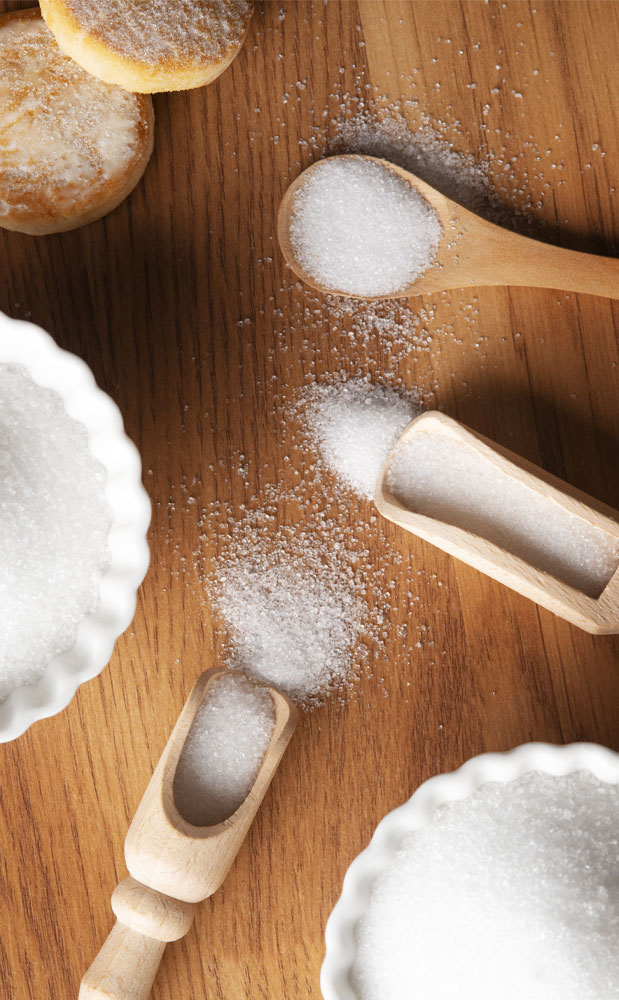Health Info
An Oxalate Overview
If you’re at risk for kidney calcium oxalate crystal stones or even kidney disease, you’ve likely heard or been informed by your physician that a low oxalate diet could help curb these risks. But did you also know that the influence of oxalates in your diet may possibly go far beyond just kidney issues? These highly reactive oxalate molecules are thought to possibly play a major role in the devel-opment of chronic disease, like autoimmune reactions and disruptions of the digestive system.
Since many high oxalate foods seem to be part of an otherwise “healthy” diet, their significance may go unnoticed. If you struggle with issues like autoimmune disease, poor digestion, joint pain, and even persistent neurological trouble, it may be time to see if eliminating these plant foods reduces your symptoms. Reducing your intake of oxalates, and consuming a diet low in oxalates, not just for a few days but for a lifetime, can drastically improve your life.

FAQs
What Should Be The Targeted Daily Amount of Oxalates?

Typical diets contain upward of 200–300 mg of oxalate each day. For calcium oxalate crystal stone prevention, a reasonable goal is an intake of below 100 mg of oxalate daily. An ideal goal for those who have already experienced stones would be to consume no more than 50 mg daily if that can be accomplished. To get there, consider the oxalate contents in common serving portions of all foods you consume, and make up a plan for yourself by utilizing the 125 low oxalate recipes in this book along with utilizing the sourcing of oxalate content of over 600 various foods found in the book.
Remember, rather than avoiding calcium rich foods, it is believed by many medical professionals that it is best to consume calcium rich foods at the same time as consuming oxalate containing foods so that the calcium is more likely to bind with the oxalates in the stomach and intestines and then ultimately pass out of your body in the stool rather than the oxalates making their way to the kidneys.
How Does Salt factor into a Low Oxalate Diet?
The average person who forms calcium oxalate crystal stones eats about 5,000 mg of sodium per day. Excess sodium can make it hard for the body to absorb calcium. It also pulls calcium from bones and fluid from your body. The calcium will then become part of your urine and increase your risk for calcium oxalate crystal stones.
So the bottom line is that a high sodium diet can trigger calcium oxalate crystal stones because it increases the amount of calcium in your urine. Adults should aim to consume less than 2,300 mg a day. One tsp of table salt has 2,325 mg of sodium. If sodium has contributed to kidney stones in the past, try to reduce your daily intake to 1,500 mg. It’s important to know that most of the sodium we eat doesn’t come from the saltshaker—75% comes from processed and prepared food. Bread, snacks, and canned foods are all made with a lot of sodium.
Home-cooked meals, fresh fruits, and vegetables are the best way to eat well and eat less sodium. Using herbs, spices, and hot peppers can help add flavor without adding salt!. Lowering your salt consumption will also be good for your blood pressure and heart! If you have had calcium oxalate or calcium phosphate stones, you should likely follow this guideline, even if you take medicine to prevent kidney stones. We always strongly recommend first discussing your diet and health challenges with your physician before making any major diet changes as only he or she knows all your challenges and what is best for you. Each of our recipes has less than 300 mg of sodium (salt).

Why is Sugar Important in a Low Oxalate Diet?

Let’s start with the proper common names. Glucose and dextrose are two names for one sugar. It is the main sugar in our blood and the main sugar in starch. Fructose comes in fruits and is altogether different in chemistry and in the way our bodies metabolize it. Sugar, what we buy in sacks, is the two molecules, glucose and fructose, linked together to make one bigger molecule containing both.
So, when you eat table sugar you are eating glucose and fructose. The proper name for table sugar is sucrose. Fructose intake, mainly as table sugar or high fructose corn syrup, has increased in recent decades and is associated with increased risk for calcium oxalate crystal stones. Sugar upsets the mineral relationships in your body by interfering with calcium and magnesium absorption. When you eat sugar, your urine calcium will rise. And, as an added insult, your urine volume will go down. Not a great combination for stopping calcium oxalate crystal stones.
The Center for Disease Control, echoing the 2015–2020 US recommendations, has clarified that the goal is less than 10% of calories as added sugar. So, if you eat 2,000 calories this would be 200 calories. Sugar has 4 calories per gram, which makes 50 g of added sugar a day the max. This example fits for a good-sized adult man in midlife. A woman would usually eat less—1,200 calories—making added sugar 120 calories or 30 g/day. By US law, labels presently show sugar in grams but will likely soon change to percentage of total calories. All low oxalate recipes in this book have less than 15 g of sugar with many less than 10 g.
How to Read Nutrition Labels
Read the nutrition labels as they are there for a reason! Use them to see how much sodium, calcium, or sugar is in each serving of a product. The hard part is eating just one serving. More often than not, we eat more than just one serving.
For example, a snack bag of pretzels may say it has 350 mg of salt. However, it may hold two servings. That means you’re really eating 700 mg of salt when you finish the bag. Little things add up. Think about how one tablespoon of ketchup adds 154 mg of sodium to your burger.
